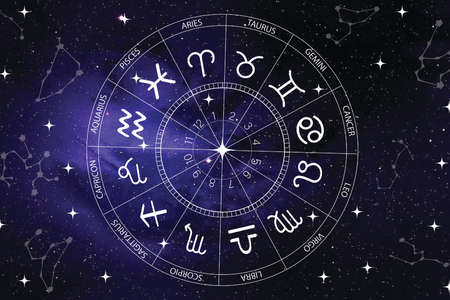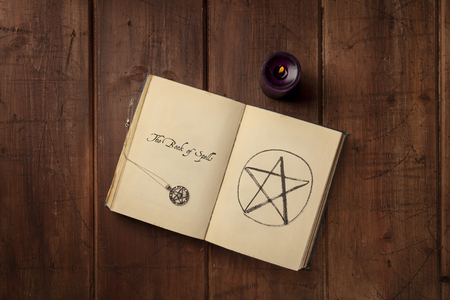The Roots of Astrology and Witchcraft in the British Isles
Long before the clangour of courtroom gavel and the ink of parliamentary statute, astrology and witchcraft found fertile soil in the British Isles. Their origins are entwined with the ebb and flow of ancient belief systems—Celtic druidry, Roman augury, Saxon superstition—and shaped by the island’s shifting social landscape. The earliest records suggest that celestial observation was not merely a pastime but a vital tool for navigation, agriculture, and prophecy. Likewise, folk practices, later labelled as witchcraft, were woven into village life: herbal remedies, charms against misfortune, and rituals to ensure a bountiful harvest.
Astrology in Britain evolved from its classical roots, filtered through medieval scholarship at Oxford and Cambridge, where learned men charted horoscopes for monarchs and commoners alike. Witchcraft, meanwhile, operated at the margins—its practitioners both feared and sought after—reflecting rural anxieties and communal hopes. These traditions absorbed influences from invading cultures; Norse seers, Norman ecclesiastics, and Moorish mathematicians all left their mark upon Britain’s spiritual tapestry.
The tension between popular custom and ecclesiastical authority was ever-present. While the Church condemned divination and sorcery as heresy, local clergy might turn a blind eye—or even participate—in rites that blurred the line between sacred and profane. Thus, astrology and witchcraft became battlegrounds upon which questions of knowledge, power, and legitimacy were contested—a dynamic that would later ignite public scandal and legal scrutiny across the realm.
2. Legal Responses: From Statutes to Courtrooms
The British Isles have long witnessed a complex interplay between mystical practice and statutory authority. Legal responses to astrology and witchcraft have evolved across centuries, with Parliament and the courts enacting measures that reflect prevailing social anxieties and intellectual climates. Below is an overview of significant legal frameworks, statutes, and parliamentary acts that shaped the prosecution and perception of these practices.
Early Statutes and Medieval Roots
The earliest legal responses can be traced to medieval canon law, wherein astrology and certain forms of divination were condemned as heretical. Yet, it was not until the 16th century, amidst religious reformations and political upheaval, that Parliament codified these anxieties into secular law. The Witchcraft Act of 1542 under Henry VIII marked the first statute specifically targeting witchcraft, criminalising “invocation or conjuration of spirits,” while astrology was often subsumed under broader anti-superstition measures.
Development Through the Early Modern Period
The Elizabethan Witchcraft Act of 1563 and James VI & Is Witchcraft Act of 1604 intensified penalties for both alleged witches and their supposed clients, reflecting widespread public fear of maleficium (harmful magic). Astrology itself faced scrutiny in times of civil unrest; during the Interregnum, astrologers such as William Lilly operated in a legal grey area, at times consulting for Parliamentarians yet risking censure if accused of fomenting sedition or fraud.
Key Parliamentary Acts: A Comparative Table
| Year | Act/Statute | Main Provisions | Targeted Practices |
|---|---|---|---|
| 1542 | Witchcraft Act (Henry VIII) | Death penalty for invocation or conjuration of spirits; property confiscation | Witchcraft, Sorcery, Conjuration |
| 1563 | Witchcraft Act (Elizabeth I) | Lesser penalties for first offences; death for causing harm via witchcraft | Witchcraft causing harm, Fortune-telling |
| 1604 | Witchcraft Act (James I) | Expanded definition; death penalty for any association with evil spirits | All forms of Witchcraft and spirit communication |
| 1735 | Witchcraft Act (George II) | Punished pretence of witchcraft rather than actual practice; focus on fraudulence | Claiming magical powers, Fortune-telling |
| 1824 | Vagrancy Act | Categorised fortune tellers as rogues and vagabonds; allowed summary conviction | Astrology, Palmistry, Fortune-telling |
The Shift Towards Rationalism and Fraud Prevention
The Enlightenment ushered in a rationalist critique that gradually reframed astrological and witchcraft practices as matters of fraud rather than diabolism. The Witchcraft Act of 1735 is particularly notable for criminalising the claim to magical powers rather than supernatural activity itself—a subtle but profound shift. By the 19th century, further legislation such as the Vagrancy Act 1824 increasingly classified astrologers and fortune tellers alongside beggars and charlatans.
The Legacy in Modern Courts
This historical trajectory reveals how statutory responses both mirrored and moulded public perceptions. Today, while overt prosecution under witchcraft statutes has ceased, echoes remain in contemporary laws surrounding consumer protection and fraudulent representation—remnants of an era when Parliament waged legislative campaigns against the shadowy arts.

3. Notable Trials and Scandals
The annals of British history are replete with vivid accounts of sensational trials and public scandals that revolved around the practices of astrology and witchcraft. These legal sagas not only mirrored the prevailing societal anxieties but also cast light upon the evolving judicial stance towards those perceived as threats to religious or civic order. Among the most storied cases is that of Agnes Sampson, a healer from North Berwick, whose 1591 trial during the reign of James VI exemplified the fevered climate of suspicion. Accused alongside scores of others, her ordeal was marked by forced confessions and dramatic testimonies—an enduring illustration of how witchcraft allegations became vehicles for communal fears.
The Case of Dr John Lambe
Equally notorious was the fate of Dr John Lambe, astrologer and advisor to George Villiers, the Duke of Buckingham. Lambe’s 1628 trial in London gripped the public imagination; he stood accused not merely of occult practices but also of moral corruption and manipulation of political power through supernatural means. The crowd’s lynching of Lambe before formal sentencing epitomised an era when legal process and mob justice uneasily coexisted, fuelled by anxiety over invisible influences.
The Pendle Witches
The infamous Pendle witch trials of 1612 in Lancashire remain among the best-documented episodes. Twelve individuals faced charges ranging from sorcery to murder, their fates sealed by local rivalries and economic hardship as much as by evidence. Here, we see the judiciary navigating between popular demand for protection and the limitations of proof—a pattern echoed in later prosecutions under evolving statutes.
Astrological Forecasts on Trial
Astrology, though less frequently punished than witchcraft, was not immune to censure. During periods of political uncertainty—such as the English Civil War—astrologers like William Lilly found themselves summoned before authorities for allegedly inciting unrest with their predictions. Such cases underscore how judicial attitudes shifted according to broader concerns: astrology could be tolerated as harmless entertainment or prosecuted as sedition depending on the winds of power.
Taken together, these cases form a tapestry illustrating how law, fear, and spectacle intertwined across centuries. Public scandals surrounding witchcraft and astrology did not merely reflect isolated incidents but rather served as focal points for negotiating social order, religious orthodoxy, and the boundaries of acceptable knowledge within British society.
4. Public Perception and Media Representations
Throughout British history, the public’s understanding of astrology and witchcraft has been inextricably linked to the way these subjects were portrayed in the media of the day. From broadsheet newspapers and sensational pamphlets to local gossip and parliamentary debates, the collective imagination was stoked, often with little regard for nuance or accuracy. The press not only reflected societal anxieties but also played a pivotal role in shaping them, particularly during periods of heightened tension such as the infamous witch trials and subsequent public scandals.
The Power of the Printed Word
During the early modern period, pamphleteers exploited fears around witchcraft for both profit and influence. Dramatic accounts of alleged witches, replete with lurid details and moral warnings, were widely circulated, feeding public hysteria. Newspapers took up this mantle as literacy rates rose; their coverage frequently blurred the line between reportage and entertainment. Astrology columns, meanwhile, found a ready audience among those seeking guidance or reassurance amid uncertainty—further embedding astrological thinking into everyday life.
Media Influence: A Comparative Glance
| Medium | Era | Impact on Public Opinion | Notable Example |
|---|---|---|---|
| Pamphlets | 16th-17th Century | Sensationalised stories fuelled witch hunts and collective paranoia. | Malleus Maleficarum-inspired tracts |
| Newspapers | 18th-20th Century | Framed astrology as both curiosity and pseudoscience; contributed to periodic moral panics about occult practices. | The Times’ coverage of 1860s witchcraft trials |
| Public Discourse | All Periods | Social conversations and sermons cemented official narratives or fostered scepticism. | Pulpit denunciations during the English Civil War |
The Self-Perpetuating Cycle of Sensation and Suspicion
The mutual reinforcement between media representations and popular sentiment cannot be understated. Headlines warning of “witch covens” or “astrological frauds” not only sold papers but also set the agenda for legal action and legislative reform. In turn, high-profile trials or parliamentary debates would become fodder for further sensational reporting, perpetuating cycles of suspicion. Even today, British tabloids occasionally revive these motifs—albeit in more playful or ironic fashion—testifying to their enduring resonance within national culture.
5. Legacy and Modern Resonances
The echoes of astrology and witchcraft trials resonate through contemporary British society, shaping attitudes toward the occult and the law in ways both subtle and profound. The infamous prosecutions under statutes such as the Witchcraft Act of 1735, and the public spectacles that surrounded them, left an indelible mark on the collective psyche. Even though legal frameworks have evolved—culminating in the repeal of witchcraft laws with the Fraudulent Mediums Act 1951—the cultural memory endures.
Historical Shadows in Modern Perceptions
Today, astrology enjoys a certain mainstream popularity in Britain, often appearing in newspaper columns or discussed light-heartedly among friends. Yet, beneath this benign surface lies a historical wariness, a vestige of centuries-old suspicion towards practices deemed unorthodox. Witchcraft, meanwhile, is largely reimagined through literature, film, and folk festivals, no longer prosecuted but still carrying an aura of otherness shaped by prior persecutions.
Legal Evolution and Societal Change
The law’s retreat from policing belief has allowed for greater freedom of spiritual expression; however, it also brings into relief questions about fraud, exploitation, and the boundary between faith and deception. High-profile cases involving psychics or “mediums” occasionally revive debates reminiscent of those surrounding historical trials—where society must balance protection from harm against freedom of belief.
Contemporary Discourse: From Stigma to Acceptance?
This complex legacy influences British discourse on alternative beliefs today. While outright accusations and legal actions have faded into history, a quiet scepticism persists alongside growing interest in esoteric traditions. Public scandals are now more likely to centre around consumer rights or ethical concerns than moral panic or heresy. Ultimately, Britain’s journey from fear-laden trials to tolerant curiosity reflects both the resilience of its legal principles and its capacity for cultural adaptation.
In sum, the shadows cast by astrology and witchcraft trials continue to inform British attitudes toward law, belief, and individual liberty—a testament to history’s enduring power over the present.


